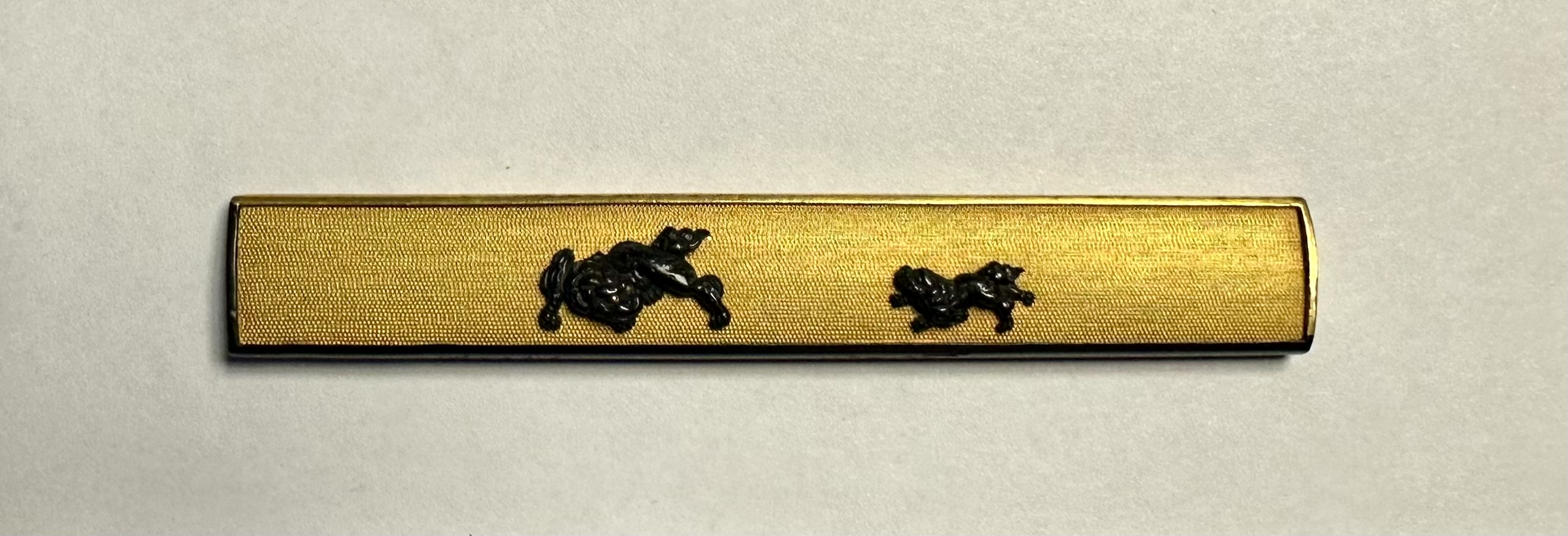


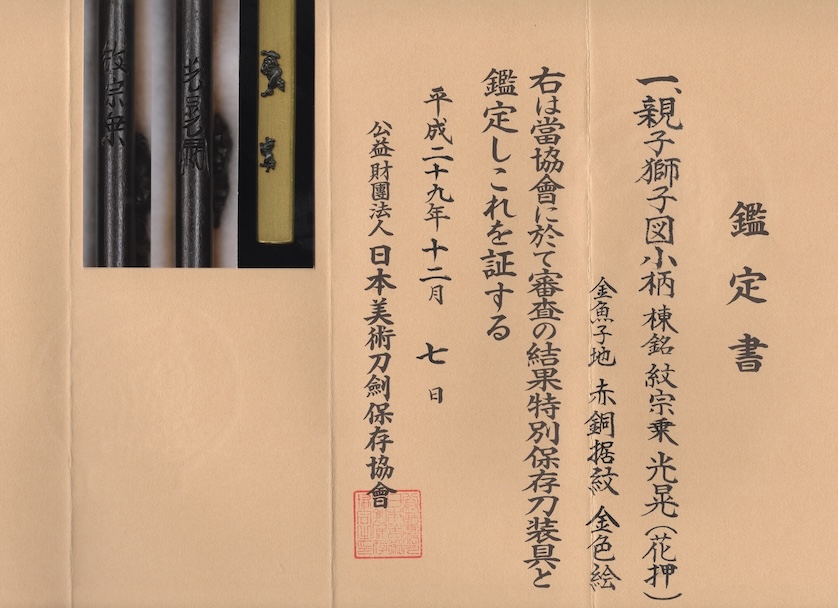
Sometimes works of Japanese swordsmithing were the result of a collaboration between two or more craftsmen. It must be admitted that this phenomenon is quite rare, and there is a special term for it: gassaku (合作). This can be explained as ‘сollaboration/joint work, for example a sword produced by two (or sometimes more) smiths. Often father and son or master and student but sometimes between smiths from distinct lineages too. Typically reserved for swords actually signed by both smiths. Different than daimei (代銘) and daisaku (代作)’. (Markus Sesko, Encyclopedia of Japanese Swords, 2014)
There could be several reasons for such collaboration in the production of tosugu, especially among kinko masters of different eras: from remaining parts and fragments of unfinished works to parts that are dismantled from damaged tosogu pieces. Using this kozuka as an example, we see an excellent example of the combination of the work of two masters of the highest level of craftsmanship, belonging to the same line of Gotō, but who worked in different eras. NBTHK experts attribute this work as ‘mon Sōjō Mitsuaki (紋宗乗光晃) kaō’. In this case, MON (紋) means that the motif (subject) that the shishi (獅子) dogs represent is the work of Gotō Sōjō (後藤宗乗), and everything else, including the nanako, ji-ita and signature is the work of Gotō Mitsuaki (後藤光晃). In this kozuka, the work of Sōjō - the second generation of the main Gotō School line - is only a motif. In case Sōjō made everything completely, and Mitsuaki only signed the final product, then the attribution would be: ‘Sōjō saku Mitsuaki kaō’, which would undoubtedly greatly increase the value of this kozuka.
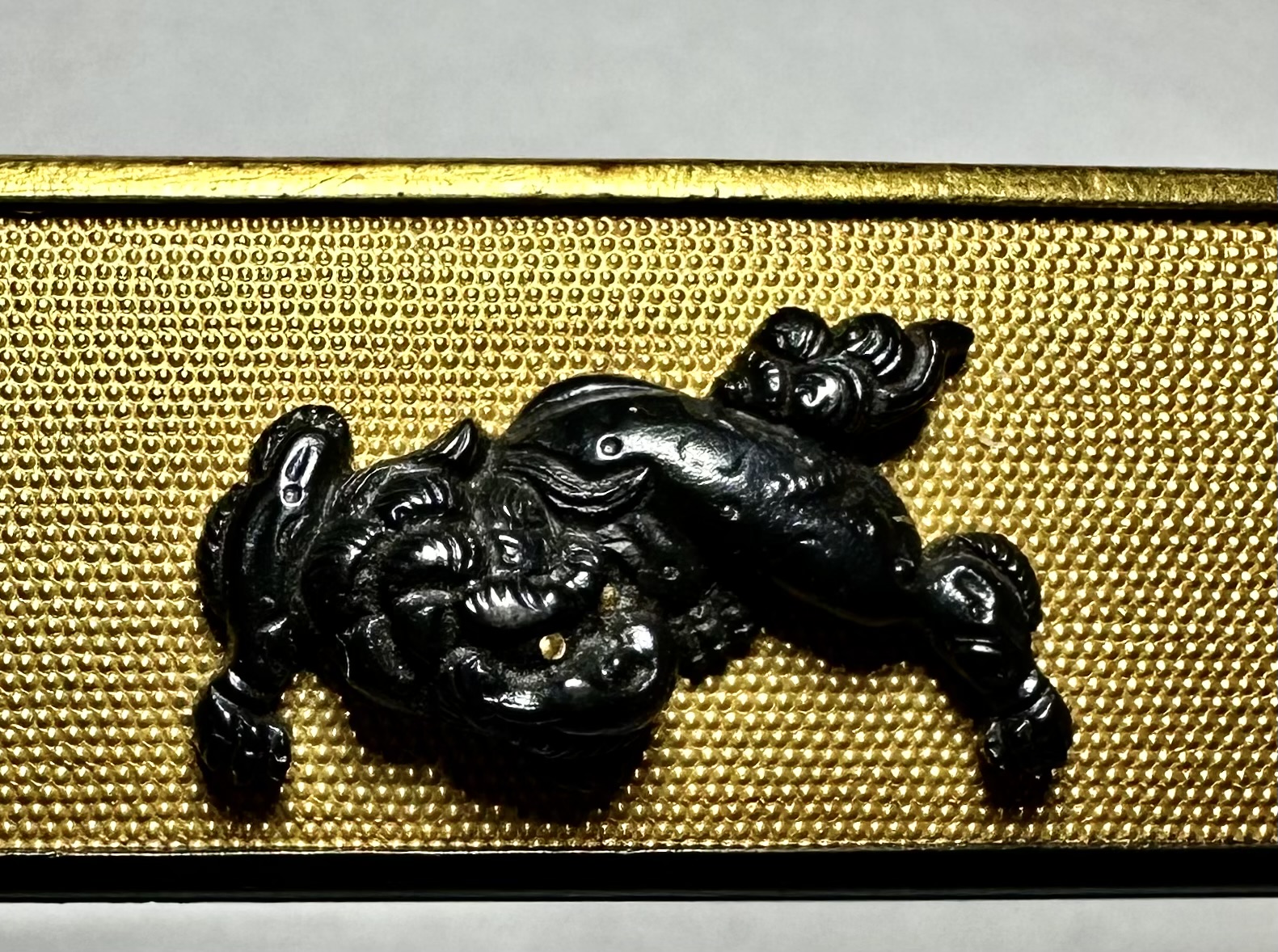
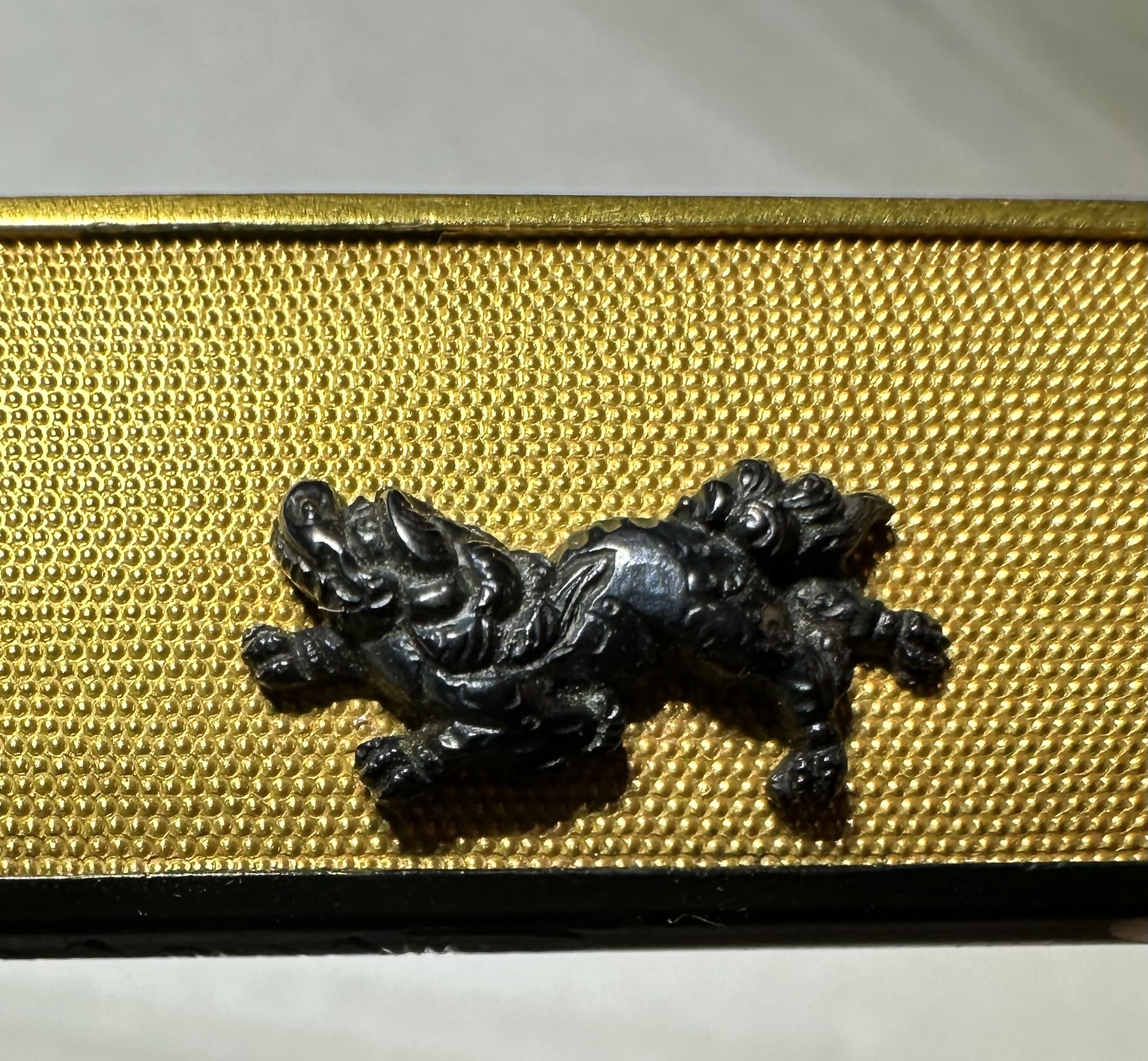
Gotō Sōjō (後藤宗乗) - the 2nd generation of the Gotō School main line (i.e. Shirobei line, 四郎兵衛). He was born in the 2nd year of Kanshō (寛正,1461) as the 2nd son of Gotō Yūjō (後藤祐乗, 1440-1512) and died in his 78th year on the 6th day of the eight month of the 7th year of Tenbun (天文, 1538). He was named Mitsutake (光武) at birth or, according to other sources, Takemitsu (武光). Later in his works he began to use the name Sōyū (宗祐). He was ordained a priest at the age of 40 under the name Sōjō (宗乗).
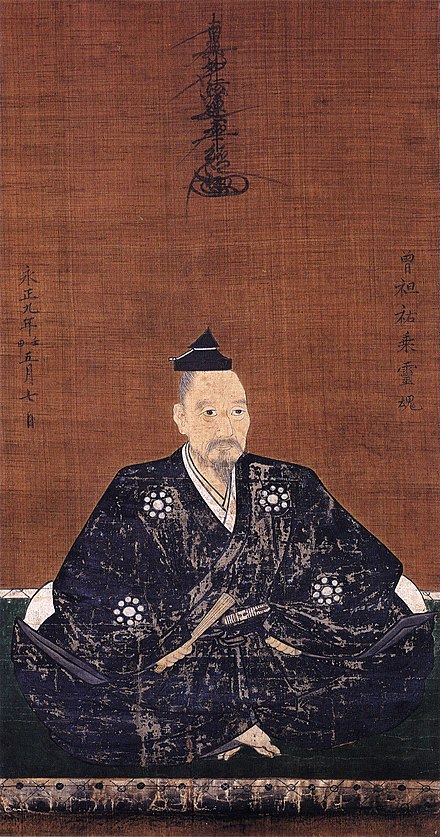
Portrait of Gotō Yūjō (後藤祐乗, 1440-1512) the founder of the Goto Shirobei line.
Gotō Hōjō (後藤方乗) - the16th generation master craftsman of the Gotō School main line. At birth he was given the name Mitsutoshi (光年). He was born in 1816 as the 4th son of Mitsuyoshi (光美, i.e. Shinjō 真乗), the 15th generation of the Gotō School main line. He succeeded as a head of the Gotō family at the age of 19 due to early retirement of his predecessor in 1835 and changed his name after to Mitsuaki (光晃). He also used the names Gennojō (源之丞), Shinjirō (新次郎) and Shirobei (白兵衛) in his earlier works.
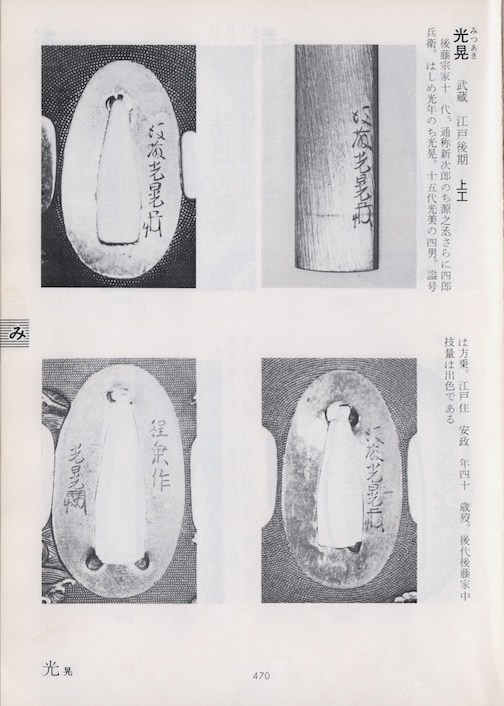
Kinko Meikan by Senichiro Masumoto & Kenichi Kokubo, p.470.
During his life, Mitsuaki was responsible for many tasks, including repairing and supervising the work of his ancestors. According to some sources, the correct transcription of the name 光晃 is read as Mitsuakira 光晃 (みつあきら). You can learn more about this from the article by Murkus Sesko: https://markussesko.com/2018/11/19/the-correct-reading-of-certain-names/ . During the Tenpō era (天保, 1830-1843) he also made oval coins on behalf of the Shogunate. He lived in Edo and died in 1856.
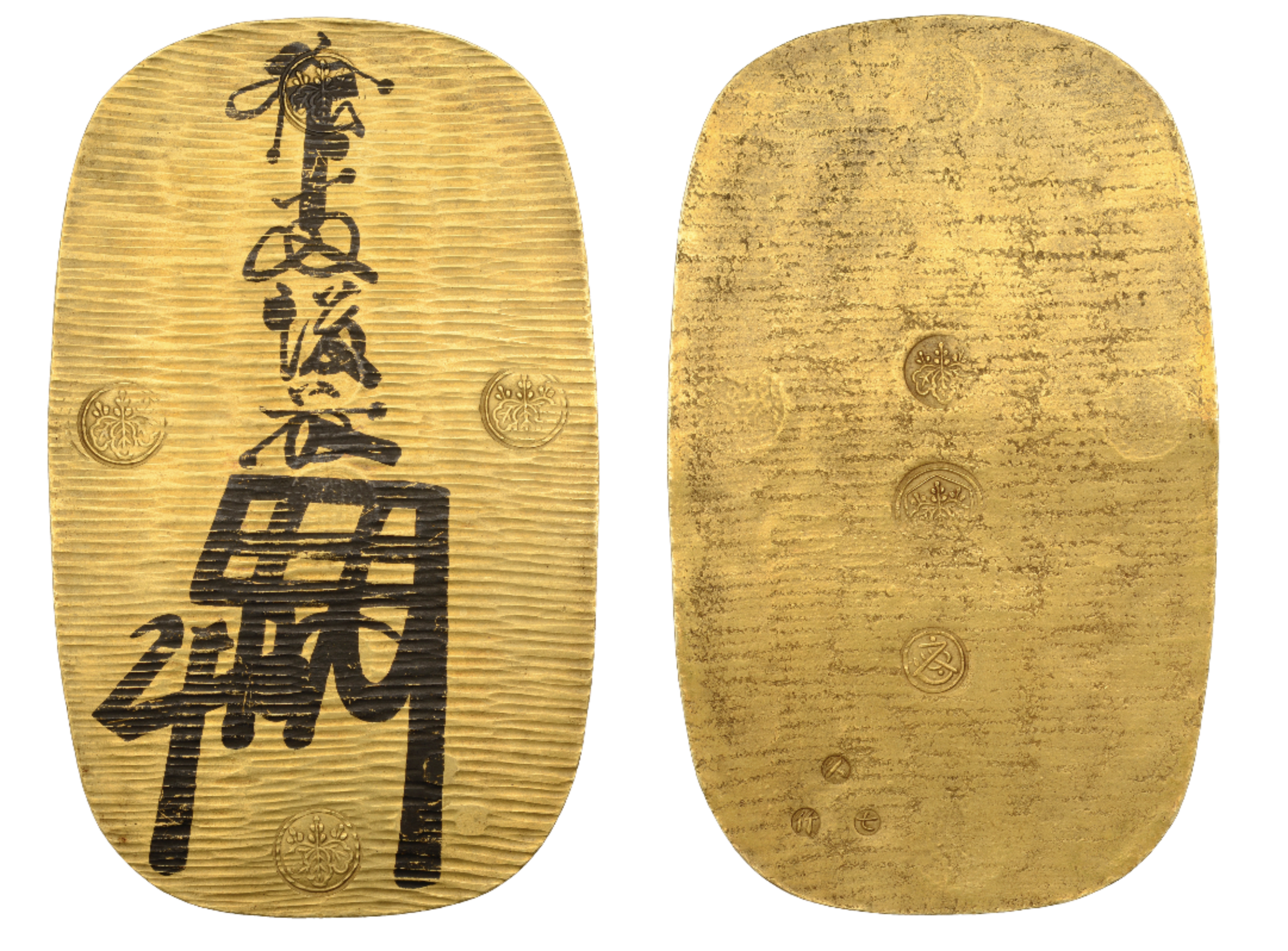
Tenpō Oban issued during the Tenpō era by Gotō Hōjō.
The Tenshō Oban is the earliest known oval gold coin was made during the period of the Tenshō era (天正, 1573-1592). Oban measured from between 14 to 17 cm in length and the weight was a little over 165 grammes with a gold content of between 70% and 76%, but it varied slightly. These coins were not for general circulation, but were instead made on a limited basis by the order of Toyotomi Hideyoshi as awards, gifts, or other ceremonial items. It was Gotō Tokujō (徳乗, 1550-1631), the 5th generation head of the Gotō family, who create the Tenshō Oban in 1588. There are characters written on the face of the Oban in black ink, denoting the weight, the Gotō family name, and kaō.
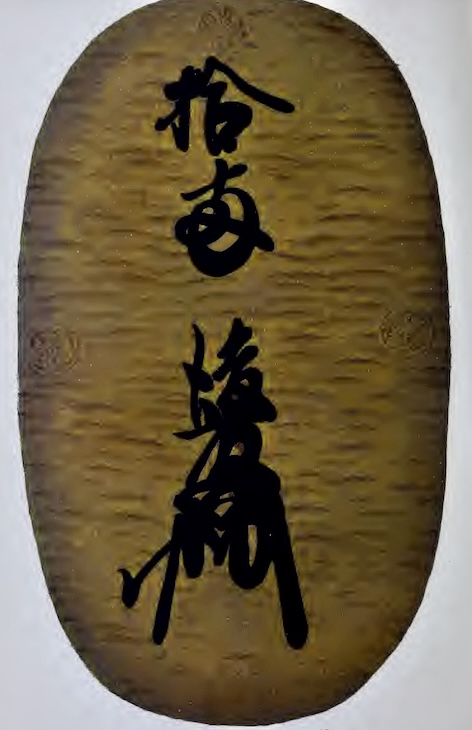
Tenshō Oban made by Gotō Tokujō in 1588.
Original content Copyright © 2024 Dmitry Pechalov